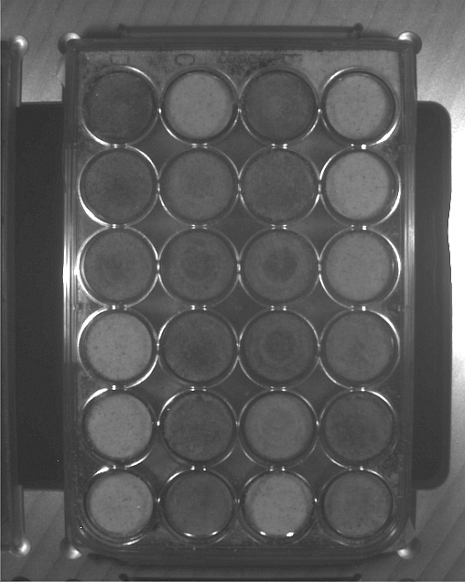Water content in plant tissue causes reflectance of electromagnetic radiation in near (700-1300 nm) and mid (1300-2500) infrared wavelength ranges [1, 2]. The transition from visible light to near-infrared (NIR) radiation is characterised by a sharp increase of reflectance at leaf surfaces, a phenomenon called red edge.
NIR images show areas with high water content, and consequently low NIR reflectance, as dark, whereas dryer regions have high NIR reflectance and appear bright. Using image analysis techniques, such reflectance patterns can be translated into colour-coded maps describing relative water content of plant tissue.
[1] PENUELAS, J.; Filella, I.; Biel, C.; Serrano, L.; SAVÉ, R. (1993): The reflectance at the 950–970 nm region as an indicator of plant water status. In: International Journal of Remote Sensing 14 (10), p. 1887–1905. http://www.tandfonline.com/doi/abs/10.1080/01431169308954010  ;
;
[2] Berger, Bettina; Regt, Bas de; Tester, Mark (2012): High-Throughput Phenotyping of Plant Shoots. In: Jennifer Normanly (editor.): High-Throughput Phenotyping in Plants, vol. 918. Totowa, NJ: Humana Press, pages 9–20. http://link.springer.com/10.1007/978-1-61779-995-2_2

